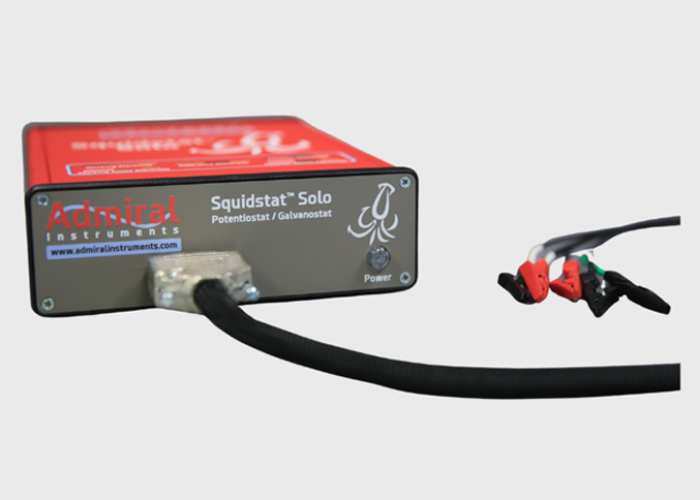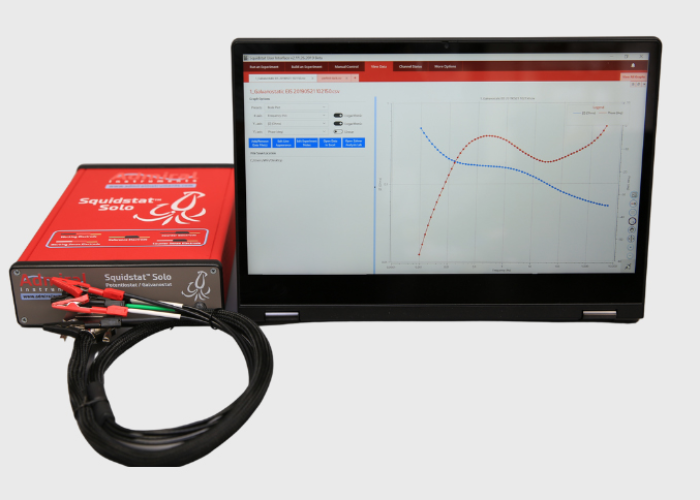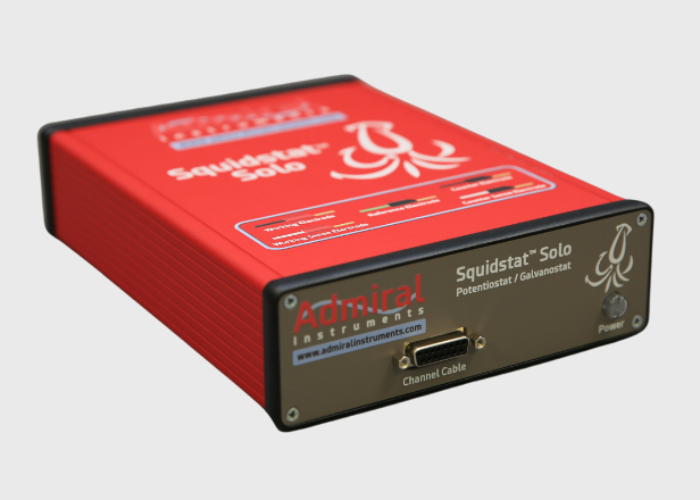
Squidstat Solo
Economical, Reliable Potentiostat For One-Channel DC Experiments.
Squidstat Solo Potentiostat Highlights:
- Top quality single-channel functionality with a compact design
- Least-expensive research-grade potentiostat in the world
- Multiple units can run simultaneously with other Squidstat models
- Onboard memory (16 GB) automatically backs up all channel data for future recovery
Each Squidstat Solo includes one 90 cm channel cable, one USB cable, and one power cable. The Squidstat User Interface software and unlimited remote technical support are included with purchase.
Technical Specifications
Precision engineering for accurate measurements
| Voltage Scan Range | ±10 V |
|---|---|
| Max Current | ±100 mA |
| Best Current Accuracy | 1 nA |
| Channels Per Unit | 1 |
Methods/Techniques
Want to learn more about these techniques?
Check out our Introduction to Electrochemical Techniques blog for an in-depth overview of their principles and applications.
Resources & Downloads
Everything you need to get started
Squidstat Solo Brochure
Squidstat Solo Data Sheet
Squidstat Solo Data Sheet
Calculating Corrosion Rates From a Tafel Plot
Calculating Corrosion Rates From a Tafel Plot
Potentiostat Design and Engineering
Using Cyclic Voltammetry To Study Redox Reactions
Using Squidstats for Stack Measurements on Batteries or Fuel Cells
Application Note Understanding and Validating Potentiostat DC Accuracy
Using Squidstats To Perform Corrosion Testing On A Metal Coupon
Publications
Research powered by Squidstat technology
Squidstat Publications
Squidstat Publications 1
Squidstat Publications 2
Customer Reviews
Related Product
Explore our precision instruments designed for electrochemical research and energy applications
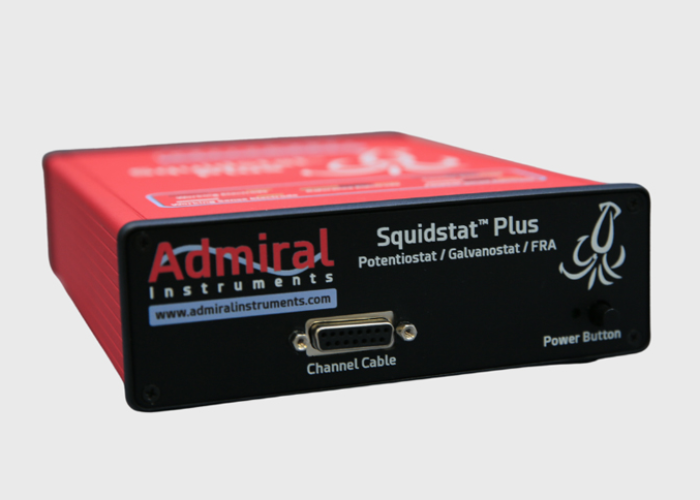
Squidstat Plus
- Voltage Scan Range: ±10 V
- Max Current: ±1 A
- EIS Frequency Range: 10 µHz - 2 MHz
- Best Current Accuracy: 1 nA

Squidstat Penta
- Voltage Scan Range: ±10 V
- Max Current: ±5 A
- EIS Frequency Range: 10 µHz - 2 MHz
- Best Current Accuracy: 1 nA

Squidstat Decka
- Voltage Scan Range: ±10 V
- Max Current: ±10 A
- EIS Frequency Range: 10 µHz - 2 MHz
- Best Current Accuracy: 1 nA
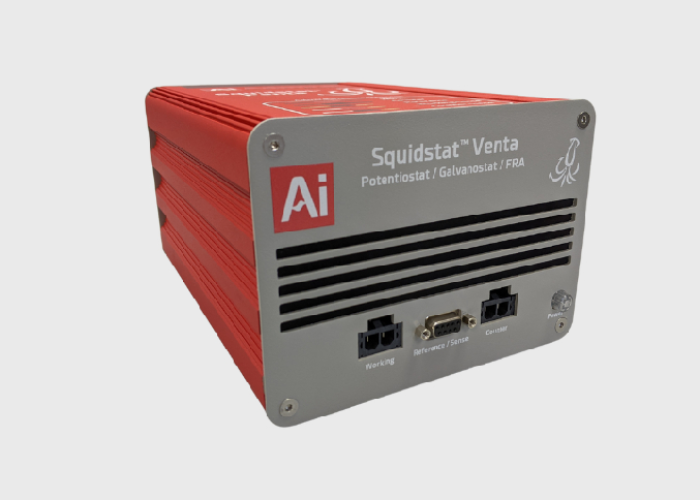
Squidstat Venta
- Voltage Scan Range: ±6 V
- Max Current: ±20 A
- EIS Frequency Range: 10 µHz - 2 MHz
- Best Current Accuracy: 1 nA
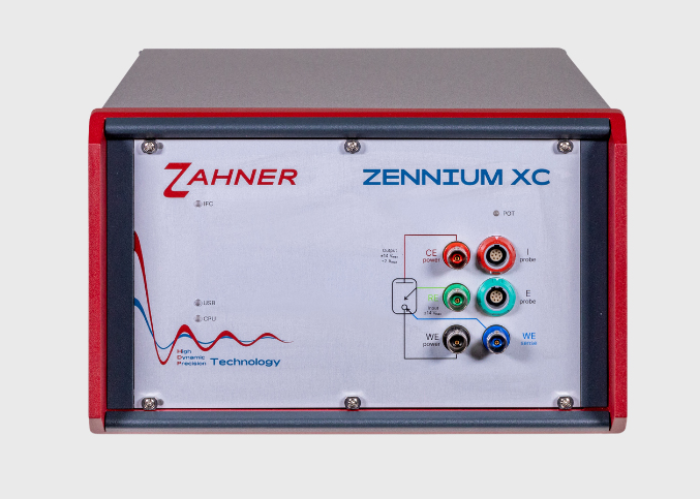
Zennium XC
- Voltage Scan Range: ±5 V and ±14 V
- Max Current: ±2 A
- EIS Frequency Range: 10 µHz to 5 MHz
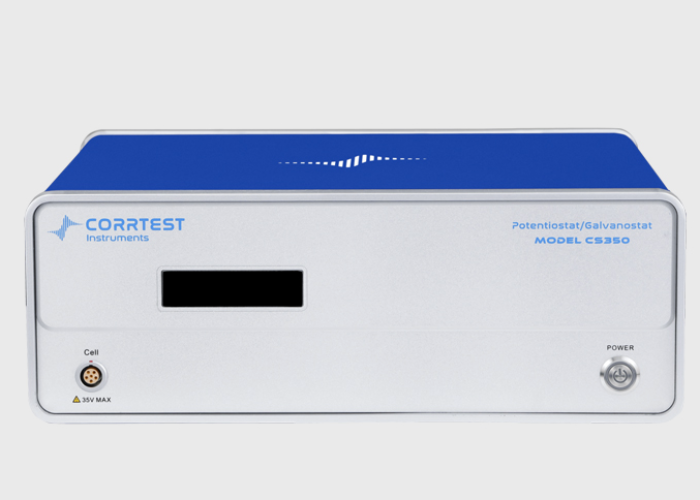
CS350M
- Potential Range: ±10 V (customizable to ±12 V)
- Current Range: ±2 A (10 programmable ranges)
- EIS Frequency Range: 10 µHz to 1 MHz
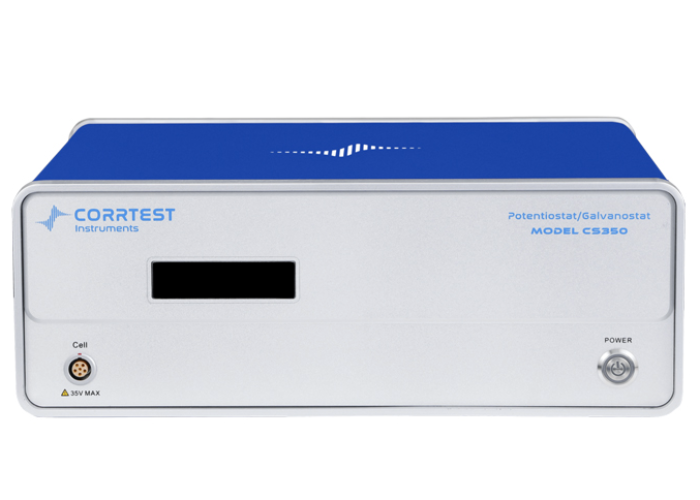
CS310M
- Potential range: ±10 V (customizable to ±12 V)
- Current range: ±2 A (10 programmable ranges)
- EIS frequency range: 10 µHz – 1 MHz
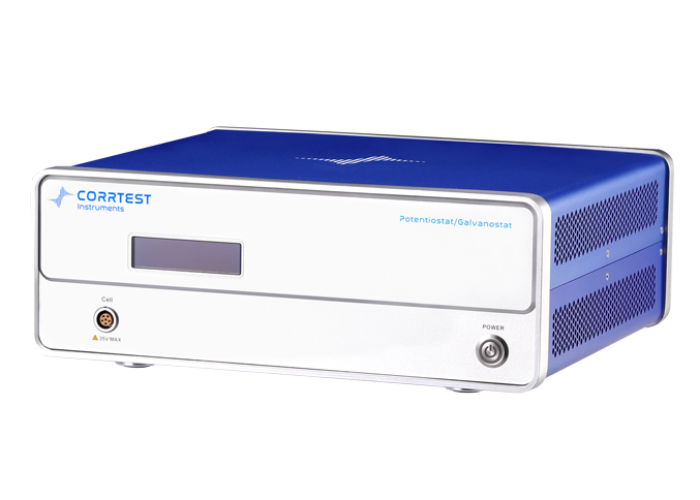
CS300M
- Potential control range: ±10 V (customizable to ±12 V)
- Current control range: ±2 A (10 programmable ranges)
- EIS frequency range: EIS not supported for this model
Still Wondering About Something?
Explore our FAQ for fast, clear answers to the most common questions—available 24/7.

